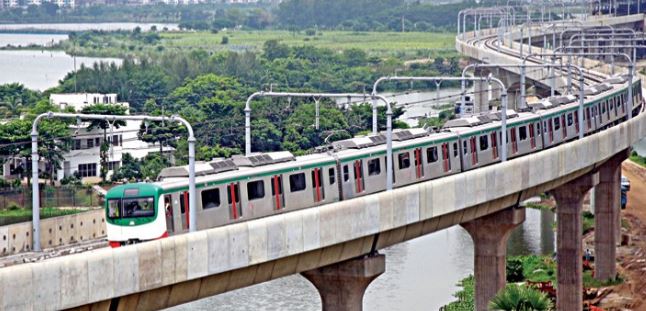Seven Icons of History at Dhaka: Bangladesh was liberated in 16 December 1971 , after a decisive nine months of War of Liberation against the oppressive rule of the then Pakistani Military Rulers. Therefore, December is the month of Bijoy (Liberation). Many statues and sculptures were built all over the country to mark our glorious Liberation War. There are a good number of beautiful statues and sculptures at Dhaka that speak of the history.
Shahid Minar : The Shahid Minar was erected in memory of the Martyrs of Language Movement. Peoples of Bangladesh honour this sculpture as the prime sign of love and dedication of their mother tongue.
The Language Movement, which culminated in 21 February 1952, was later turned into the movement of self-emancipation and War of Liberation in 1971. Recently, UNESCO declared February 21, as the International Mother Language Day. Architect Hamidur Rahman designed the structure
![]()
![]()
![]()
![]()
Shahid Minar National Memorial Aparajeyo Bangla Swoparjito Shadhinota
National Memorial : Seven pointed L-shaped concrete structures with variable heights and widths are sequentially placed to look like a huge 153 feet high pointed triangle that seems splayed out at the base from the front. Built in the middle of a spread of an 84-acre area, designed by the architect Abdur Rashid, it includes the original mass grave, the early bhittiprastar (foundation stone), helipads, a parking lot, a stretch of wall for mural and gardens. Seven harmonious structures correspond to 52, the year of the Language Movement, the dates of freedom and independence days, respectively 16 and 25 (when the two digits are added it is number 7).
![]()
![]()
![]()
Rayerbazar Badhabhumi Smritishoudha Martyred Intellectual Memorial Shikha Anirban
Aparajeyo Bangla : Aparajeyo Bangla is the reflection of the student movements that helped shape a political culture of dissent that culminated into movements and lastly resulted in the freedom struggle. The Dhaka University Students’ Union, DCSU and the University authority joined hands to give the spirit of liberation a physical and symbolic shape. The sculpture now stands at 17 and half feet in concrete structure, including the height of the base. Syed Abdullah Khalid, the sculptor who built the first national monument argues, There are monuments recognised and built by the government, and there are monuments that are build by the people, mine is of the second kind.
Swoparjito Shadhinota : Built in 1988 by an eminent architect Shamim Shikder the small but elegant sculpture depicts the struggle of the Liberation War and the surrender of Oppressive army. The sculpture is situated in a small island in front of Teachers’ Students Centre of Dhaka University.
Rayerbazar Badhabhumi Smritishoudha : Built by two friends Farid Uddin Ahmed and Md. Jami Al Shafi, the Rayerbazar Memorial is a homage to the intellectual martyrs. It was completed in 1999. Alongside the sporadic killing that took place, at the last moment of the war, when there was only two days left to the surrender of the Pakistan force, the collaborators, the local quislings gave the wholesale killing by the army a final and freaky touch. They implemented their master plan to wipe out the intellectuals who had the courage to stand against them while not leaving the country.
Martyred Intellectual Memorial : During the whole nine months struggle, the Pakistan Armed Forces with its collaborators started annihilating intellectuals of the country so the backbone of the country can be crushed. Specifically, on the nights of 14 and 15 December, the collaborators killed more that a few hundreds (total figures could not be ascertained) of doctors, professors, journalists, social workers, politicians and other intelligentsias. Their decomposed bodies were found at the brickfield at Rayer Bazar. A very sullen and solemn structure was built at the site.
Shikha Anirban : Shikha Anirban is situated inside Dhaka Cantonment. It was situated in memory of the members of the Armed Forces, who laid their lives in the War of Independence. A very simple but solemn structure has a flame burning at the centre.



